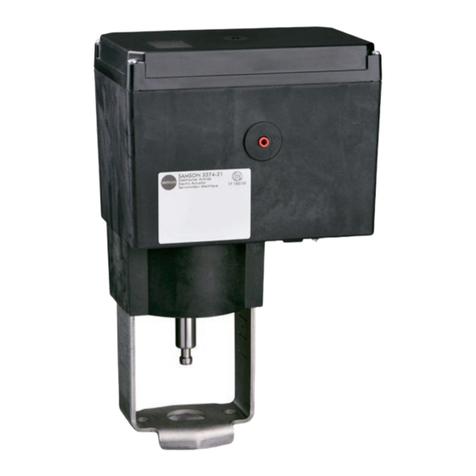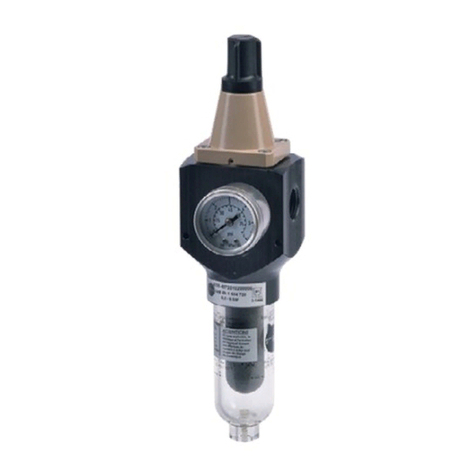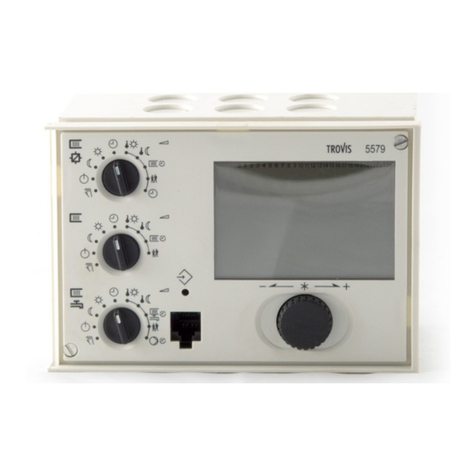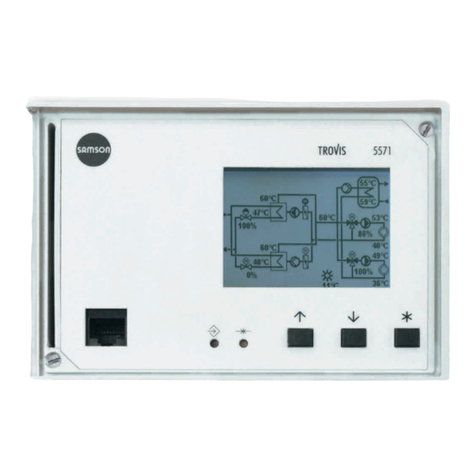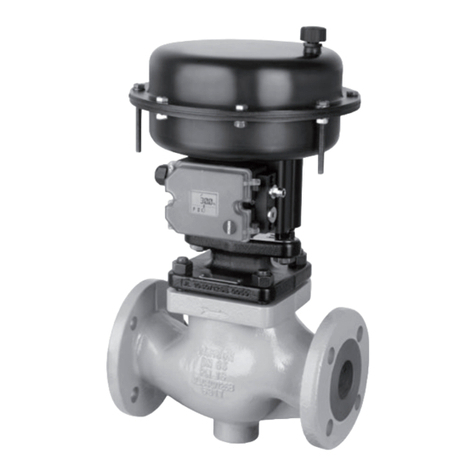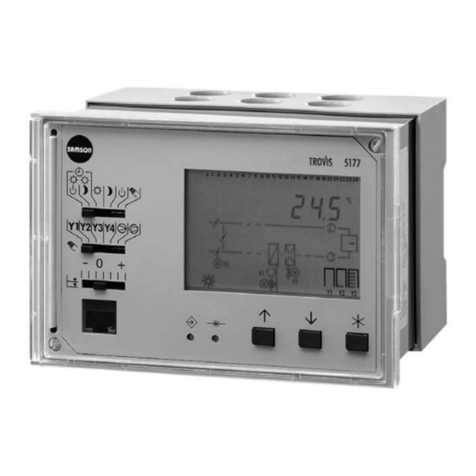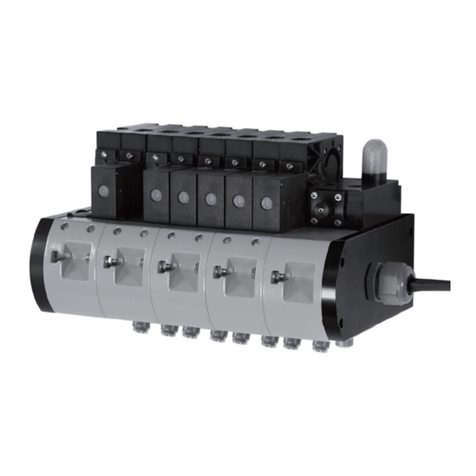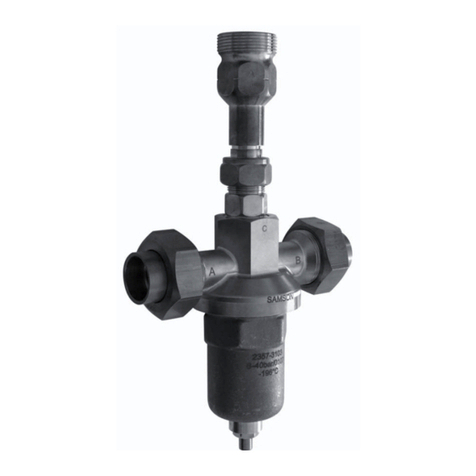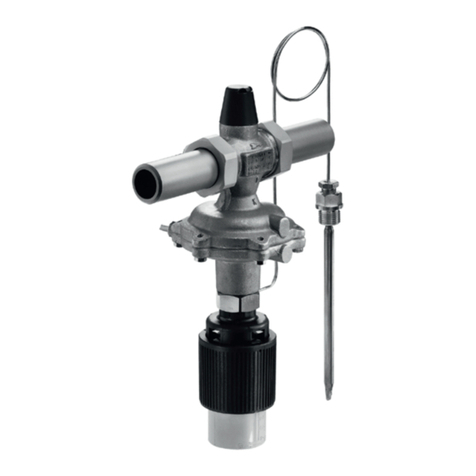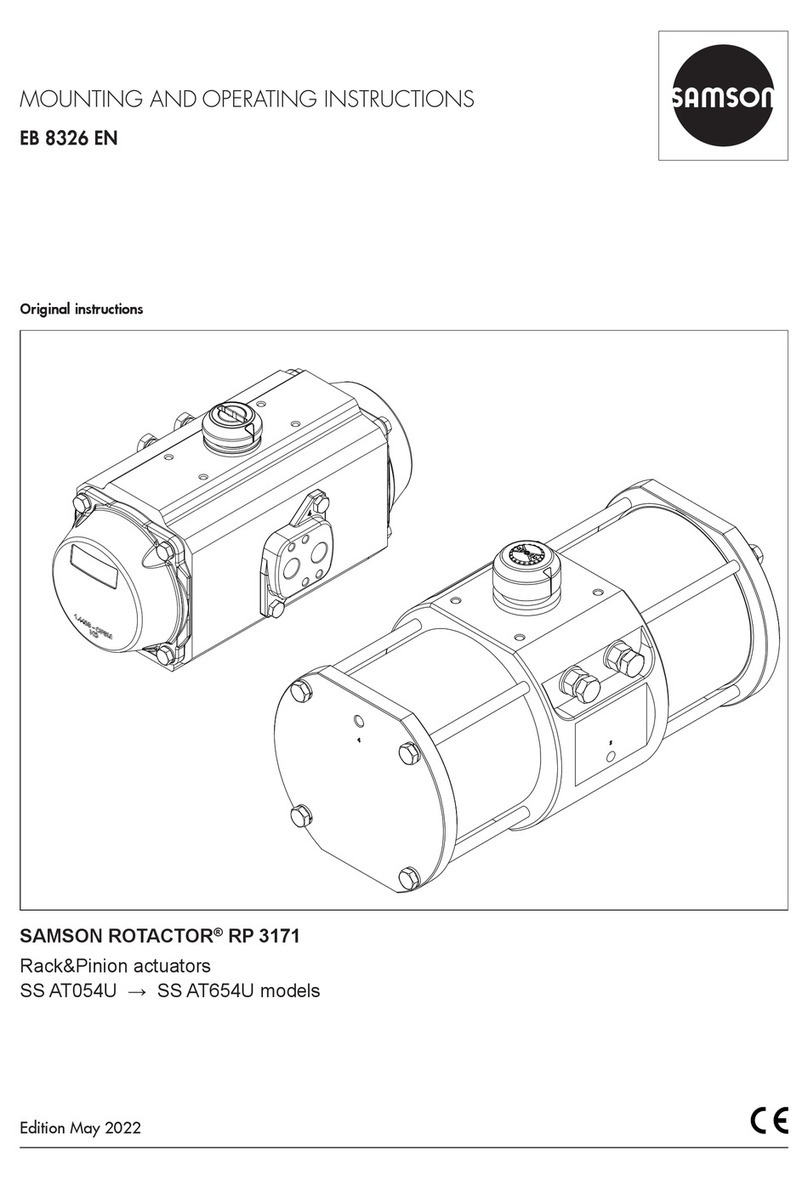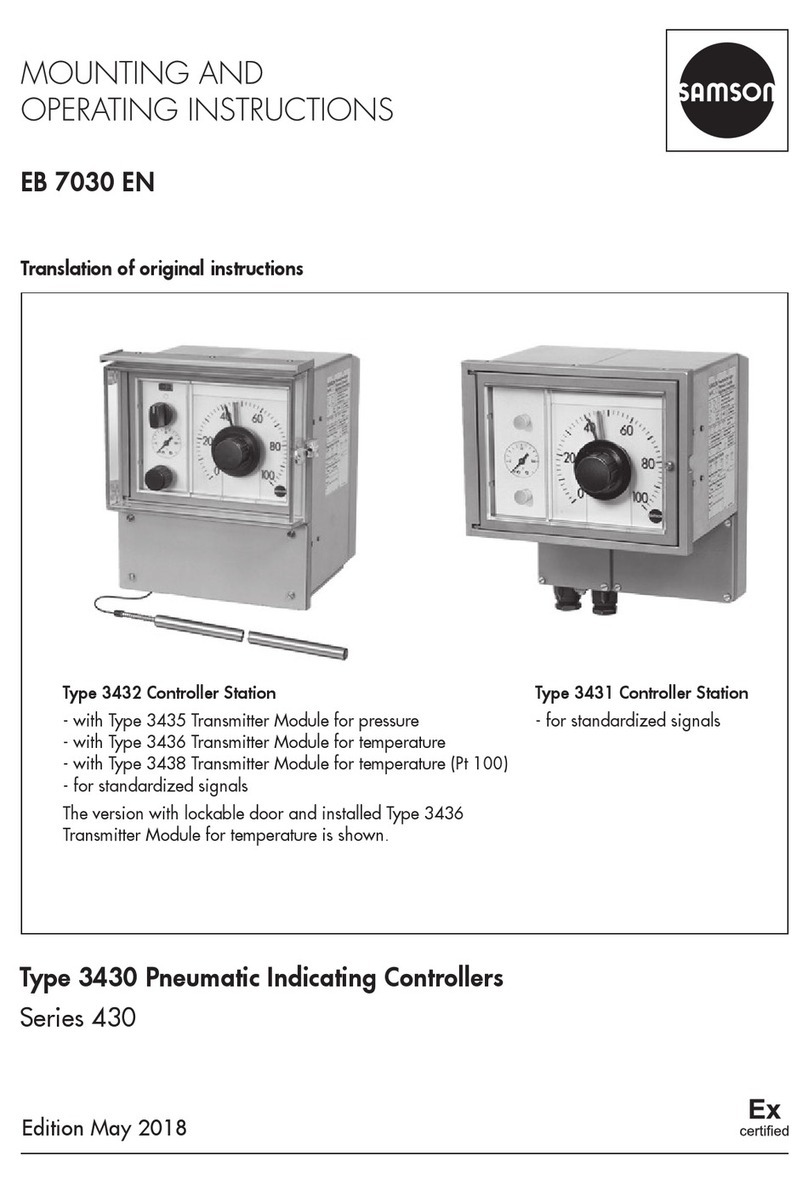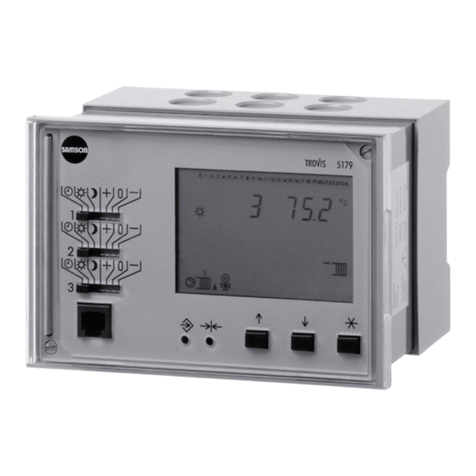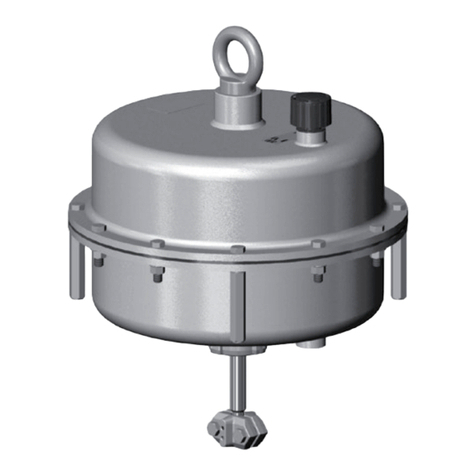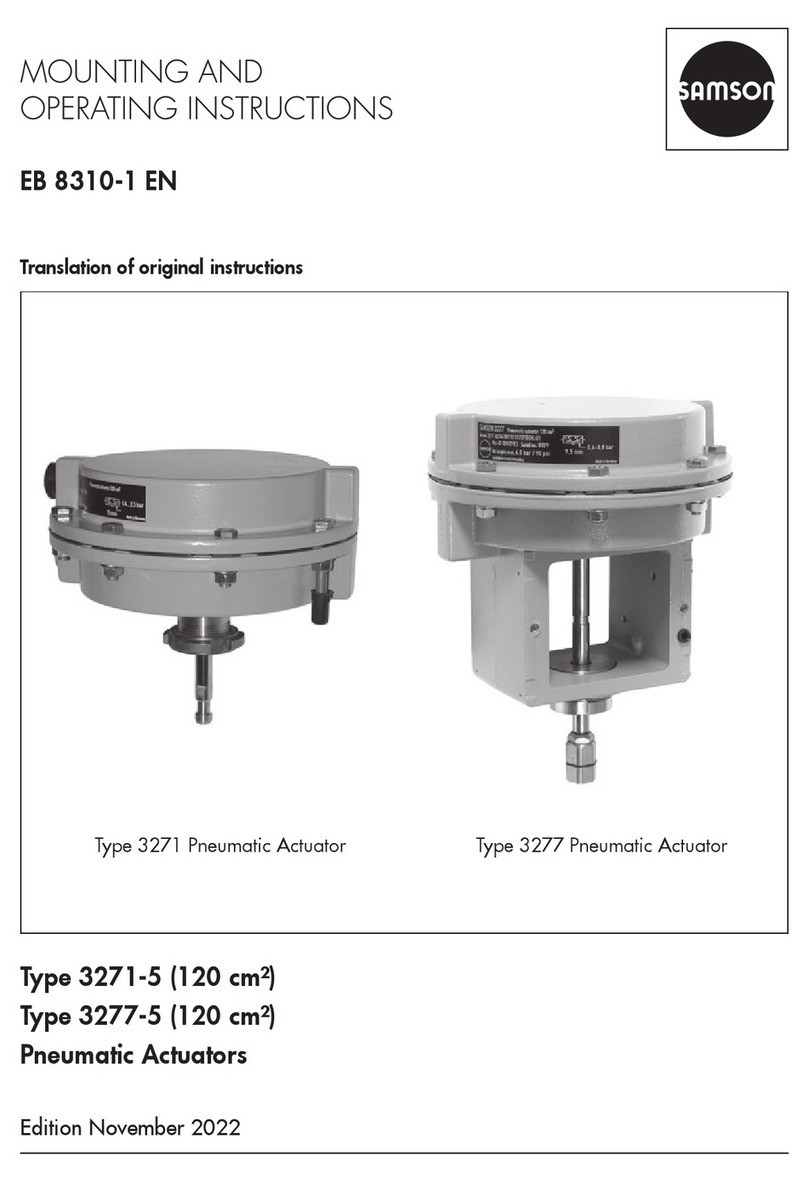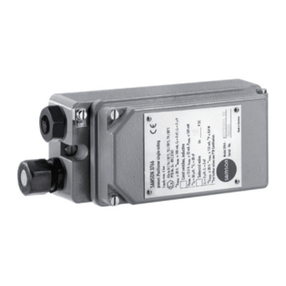
1.2 Principle of operation
The pressure-tight actuator housing (1, Fig.
2 on page 7) also serves as an oil reservoir
and incorporates the c linder housing (2),
c linder (5.1) and piston (5.2), motor (6.1),
pump (6.2) and solenoid pilot valves (6.4).
The motor (6.1) driven b the oil pump
(6.2) feeds compressed oil to the corre-
sponding c linder chamber via the check
valve (6.3) and pilot valve (6.4). In the de-
energized state, the solenoid valves are
closed. The open when the controller issues
a signal. When reaching final positions, or
external forces cause the nominal force of
the actuator to be exceeded, the motor is
deactivated.
Depending on the version, the actuators are
equipped with or without one or two com-
pression springs (5.7, 5.8). With T pes
3274-11, -12, -15, -16 and -21 to -23, the
motor moves the actuator stem in onl one
direction. The stem is then retracted b the
tension of the compression spring. Actua-
tors with electric override have two pushbut-
tons to open or close the valve.
Actuators with mechanical override are ad-
ditionall equipped with a gear case. An ex-
ternall mounted hexagon nut is used to
operate the mechanical override. The re-
lease button on the top of the actuator
serves to either open or close the control
valve.
Versions with fail-safe action are equipped
with a spring return mechanism and an ad-
ditional safet solenoid valve which opens
when the power suppl is interrupted, thus
reducing the oil pressure in the c linder
chamber. This mechanism moves the valve
plug to the fail-safe position. The operating
direction "Actuator stem extends or re-
tracts", depends on the spring arrangement
in the actuator.
1.3 dditional electric equipment
All additional electric equipment is located
in the terminal box (3). A rack-and-pinion
gear converts the linear travel of the actua-
tor stem into a rotar motion which is
picked off at the shaft to operate the switch-
ing and signaling elements. This additional
electric equipment can be retrofitted. The
maximum equipment configuration is
shown in the table "Additional equipment"
in section 4.2.
Electric positioners
Electric positioners compare the output sig-
nal of either 4(0) to 20 mA or 0(2) to 10 V
from an electric controller with the position
of a potentiometer (proportional to the
travel of the control valve) and produce a
three-point stepping signal.
Electric position transmitters
In the version with three-point stepping sig-
nal, an 0(4) to 20 mA or 0(2) to 10 V out-
put signal is generated proportional to the
travel of the valve using a 0 to 1000 Ω
potentiometer.
Potentiometers
The actuators can be equipped with two
potentiometers. A gear segment is driven b
a shaft. An easil adjustable transmission
mechanism including a twin pinion ensures
that the angle of rotation of 260° remains
the same for rated travels of 15 and 30 mm.
6EB 8340 EN
Design and rinci le of o eration

